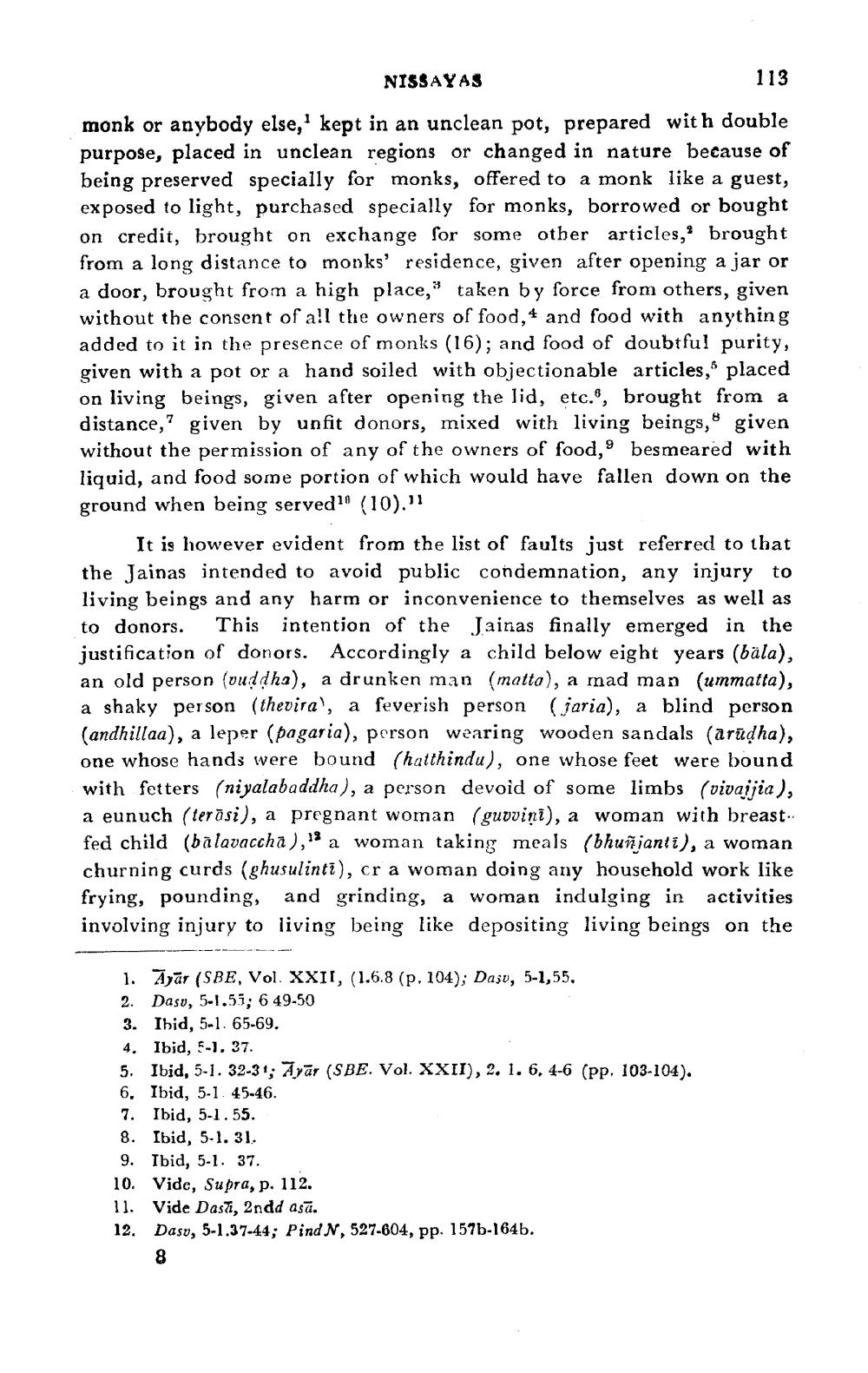________________
NISSAYAS
113
monk or anybody else,' kept in an unclean pot, prepared with double purpose, placed in unclean regions or changed in nature because of being preserved specially for monks, offered to a monk like a guest, exposed to light, purchased specially for monks, borrowed or bought on credit, brought on exchange for some other articles, brought from a long distance to monks' residence, given after opening a jar or a door, brought from a high place, taken by force from others, given without the consent of all the owners of food, 4 and food with anything added to it in the presence of monks (16); and food of doubtful purity, given with a pot or a hand soiled with objectionable articles, placed on living beings, given after opening the lid, etc.", brought from a distance,? given by unfit donors, mixed with living beings, given without the permission of any of the owners of food, 9 besmeared with liquid, and food some portion of which would have fallen down on the ground when being served 1(10)."
It is however evident from the list of faults just referred to that the Jainas intended to avoid public condemnation, any injury to living beings and any harm or inconvenience to themselves as well as to donors. This intention of the Jainas finally emerged in the justification of donors. Accordingly a child below eight years (bala), an old person (vuddha), a drunken man (matta), a mad man (ummatta), a shaky person (theviral, a feverish person (jaria), a blind person (andhillaa), a leper (pagaria), person wearing wooden sandals (arūdha), one whose hands were bound (hatthindu), one whose feet were bound with fetters (niyalabaddha), a person devoid of some limbs (vivaijia), a eunuch (terāsi), a pregnant woman (guovini), a woman with breastfed child (bālavaccha)," a woman taking meals (bhuñianti), a woman churning curds (ghusulinti), cr a woman doing any household work like frying, pounding, and grinding, a woman indulging in activities involving injury to living being like depositing living beings on the
1. Ayar (SBE, Vol. XXII, (1.6.8 (p. 104); Da;v, 5-1,55. 2. Dasy, 5-1.51; 6 49-50 3. Ibid, 5-1. 65-69. 4. Ibid, 5-1. 37. 5. Ibid, 5-1. 32-31; Ayar (SBE. Vol. XXII), 2. 1. 6. 4-6 (pp. 103-104). 6. Ibid, 5-1. 45-46. 7. Ibid, 5-1.55. 8. Ibid, 5-1.31. 9. Ibid, 5-1. 37. 10. Vide, Supra, p. 112. 11. Vide Dasi, 2ndd asā. 12. Dasu, 5-1.37-44; Pind N, 527-604, pp. 157b-164b.




